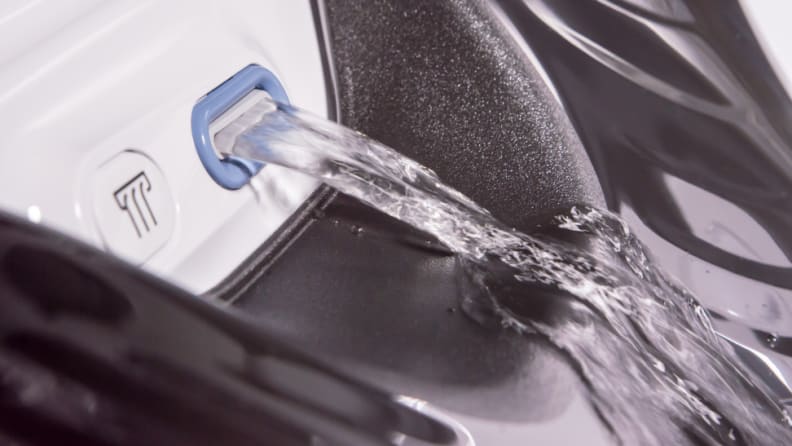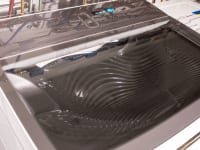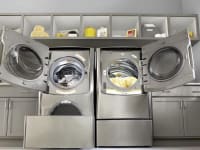Here’s what happens inside your washing machine while it cleans
Once you press start, the magic begins
Recommendations are independently chosen by Reviewed's editors. Purchases made through the links below may earn us and our publishing partners a commission.
After you load the dirty laundry and slam the door of your washing machine, the magic begins. But how does your washer clean your clothes? It takes a combination of water, detergent, and mechanical action to do the job.
If you picture your clothes swimming around the tub in a deep bath of water and detergent, that’s not how wash gets done in a modern washing machine. Newer washers are engineered to get laundry clean using smaller amounts of water.
High-efficiency washing machines require you to use low-sudsing HE detergents, because old school detergents make too many suds for HE washers to rinse out thoroughly.
Now, assuming you’ve selected a cycle, added detergent, and pressed Start, here’s the general sequence of steps that happen inside a top-loading high-efficiency washer:
1. The tub spins slowly to balance and sense the load inside the washing machine.
It may take a few spins for the washing machine to determine the size of the washload.
2. The wash cycle begins.
Based on what the washer senses, the appropriate amount of water begins to run into the tub.
3. Water pours over the detergent dispenser to bring liquid or powdered detergent into the mix.
If you use pods, most washers have you toss them right into the tub.

Water pours over the detergent dispenser to get liquid or powdered detergent into the tub, where it dissolves.
4. The machine pauses as detergent dissolves in the washer.
Detergent works because the molecules in its surfactants are attracted to oils on one end, and water on the other end. That’s how dirt and grease are drawn out of your clothes and into the wash water.
5. Mechanical action is the next step in getting dirt out of laundry.
The tub moves back and forth, pushing the clothes against each other, and into the sides and bottom of the tub, to help force the dirt out.

This modern high-efficiency washing machine doesn't have a pole agitator, so it has lots of room for dirty laundry. Clothes rub against each other, and the sides and bottom of the tub to help remove dirt and stains.
6. Dirty water drains out of the tub.
The tub spins to get the rest of the dirty water out of the clothes.
7. The washer refills with clean water for the rinse cycle.
It’s fine to use a cold water rinse, though some washers offer a warm rinse, just because it makes wet clothes more comfortable to handle when it’s time to unload.

Water flows into the washing machine's tub. High-efficiency washers use much less water than old fashioned washing machines to get clothes clean.
8. The laundry tosses around in the rinse water.
Detergent and dirt rinse out. There are a few washers that allow you to add more rinses, to get every drop of detergent out of the laundry.
9. The washer drains, and the machine spins rapidly.
Depending on the type and model of your washer, the tub spins at speeds between 800 and 1600 rpm. The more water that’s removed from the clothes at this point, the less time it will take them to dry.
10. The wash cycle is over.
Your clothes are clean, and ready for a tumble in the dryer!
Typically, your washing machine will let you choose a number of options to customize each load, and if there’s a group of settings you use frequently, some washers let you save them in your own cycle.
Before there were washing machines, people took their laundry to a river and beat it on a rock, or boiled it in a bucket of lye. It’s never been fun to do laundry, but we’re lucky—modern washing machines do all the hard work.



